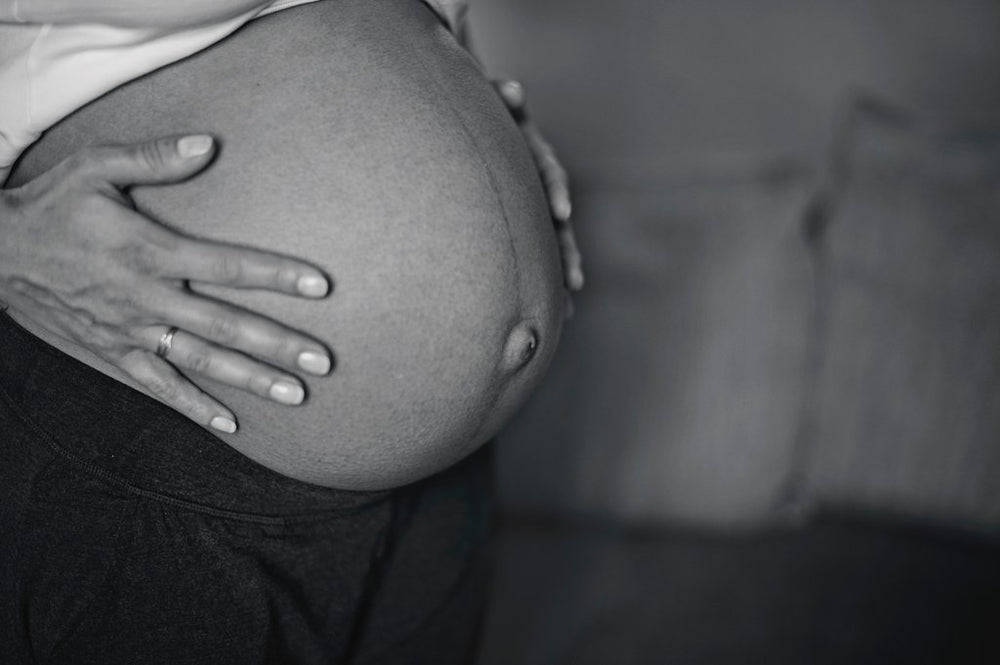
So you've just visited your midwife and she (or he) has told you that your baby is back to back. What do you do now? Well, you can try hands and knees position and avoid slouching during pregnancy, although current evidence would suggest that this makes little difference to the position that your baby will be in as your labour begins. Current evidence would also dispute the notion that the cause of your baby's back to back position is related to what you have and have not done (see above).
Some 15 - 30% of babies will start labour in this position and to them this is a comfortable, normal position. The reason that babies prefer this position is most usually due to the shape and type of pelvis you have. So, let me explain exactly what back to back means and why it happens
What Is It?
The technical name for this is 'Occipito Posterior' and you may see it in your maternity notes as simply 'OP'. Your baby is sitting upside down, or head down, in your womb and looking towards your your stomach muscles (if you had a sunroof where your belly button was you'd be able to see his beautiful face). During pregnancy, this position makes no difference to you or him, he's quite happy there and may well decide that he'd like to stay there. The difference with this position as opposed to when babies face your spine is the impact that it has on your labour. Let us explain why and how that happens:
Why Does It Happen?
Your pelvis is made up of 3 bones which are held together with ligaments, muscles and tendons. At the back is the sacrum, and this, along with the bottom part of your spine protrudes on the internal part of your pelvis. This prominent part of your pelvis combined with your posture may cause a baby in the back to back or 'posterior' position to tip his head back slightly. "Why would this be a problem?" I hear you ask, well, imagine that you're putting on a jumper and the neck is very tight; what do you do? You tuck your chin onto your chest so that the smallest diameter is trying to get through this tight neck of the jumper. And that's exactly what babies try to do in labour, make their head as small as possible. But, when a baby is back to back, they will naturally be comfortable with their head in a normal 'tucked in' position or tipped slightly backwards. It's this tipping of their head that causes the different pattern of labour associated with back to back babies.
What Kind Of Labour Can I Expect?
If you imagine that your cervix, now that it's opening has your baby's head, surrounded by the bag of waters sitting on it. With a baby facing your spine, they are able to tuck their chin neatly to their chest making a tight fit of head against cervix. Now, when a baby is back to back, with his head not so neatly tucked in, water is able to escape around his head causing the expanding balloon affect. Once enough water exerts enough pressure on a certain area of the membranes they will burst and that's why most of the women whose waters break before labour have babies in a back to back position. Also, because your baby's head diameter is now slightly bigger, due to his position, he's putting a lot of pressure through the bottom part of your spine and the back of your pelvis. You may also have heard this known as 'back labour', where women feel most of their labour pain in their back. Because of this, the early part of labour, where your cervix is beginning to thin out and open, may be longer and stop and start more. It may take a few days for your cervix to begin to open and your labour to establish, and because of this, it's important that you rest when you can, drink and eat as normal and make sure that your environment is as comfortable and calming as possible (unless you're classed as high risk, home ideally is the best place for you just now).
Now, this isn't necessarily a bad thing at all. Most back to back labours have a far gentler build up allowing plenty of your natural pain killers, endorphins to be produced. The problems occur with the language that we health care professionals use, the subsequent fear that this instills in women and the intervention that we use in labour, such as breaking waters to 'speed things up'. This fear, coupled with self doubt in your body's ability to birth, only exacerbates these problems and once you start on the cascade of intervention, usually beginning with the artificial breaking of your waters or being encouraged to have strong pain relief you can understand why back to back babies get a bad reputation. You can read more on these problems in our 'Shrinking Cervix' blog.
What Can I Do?
You really want to avoid being in hospital in the early stages of your labour and that way you can avoid the negative language, encouragement to use strong pain relief (such as epidural and diamorphine, again see the pain relief blog on this) and the artificial breaking of your waters (the progress of your labour will be slower, remember and your cervix has a progress chart to follow in labour). Back rubs by your birth partner will be a great benefit with this type of labour as the first part of the labour is usually longer with most of the pain felt in your back. You will probably find sitting on the toilet or leaning forwards on a birthing ball the most comfortable positions to be in.
What you will also find is that when you lie down, the contractions become less intense and as much as you may wish to rest it will only make your labour longer, so avoid it if at all possible. Baths will also help during labour as will a TENS machine. But, the most important thing to remember is that you want to help your baby to turn as early as possible in your labour, and most will, if not they are usually born facing upwards. To help your baby to turn you either need to make your pelvis bigger or his head smaller. His head needs to reach your pelvic floor to turn and tuck in and he's going to struggle to do that if there's no room for him to drop down to reach it. That's why you need to sit either on the toilet, in a squat, on a birthing ball, in fact any position where you feel the contractions more intensely and back back pain less so.
Pilates during pregnancy will help to strengthen (dramatically) your abdominal muscles and pelvic floor, and when any muscles become strengthened and toned they 'pull up' or 'pull in'. With a strong pelvic floor to turn against your baby can make this turn earlier in labour thus reducing the length of that labour.
Now For The Good News
While you've been coping with this early part of labour, your body has been pumping out huge amounts of endorphins, your natural pain killer. Once your baby has turned, not only does your back ache ease but your labour speeds up too, and guess what, you've still got all these natural pain killers. Essentially, the second half of your labour will be much easier than the first so don't fall into the trap of thinking that things will get worse, they will most likely only get better. So remember,
- Stay at home as long as possible
- Use the toilet, squatting, or any position where your knees are higher than your hips - think 'knees to chest'
- Use heat packs, baths, massage and TENS for back ache
- Eat, drink and rest as you need to (make your birth partner do the same)
- Don't worry if your waters break on their own, they were meant to, just let your midwife or hospital know
- Try and avoid having your waters broken by health care professionals by asking what benefits this will bring and how much will it speed up my labour (only by 20 minutes is what the research says)
- Decline routine vaginal examinations, that way no one will know if the rate at which your cervix opens doesn't meet a standard rate of progress, thus any intervention from there is virtually impossible.
- Read up on all forms of pain relief before labour so that you can make an informed choice during labour.
- This position is a variation of normal, not a position that needs to be 'fixed', if it was, human beings as a species would be very poor at giving birth and we're actually rather splendid at it!



















